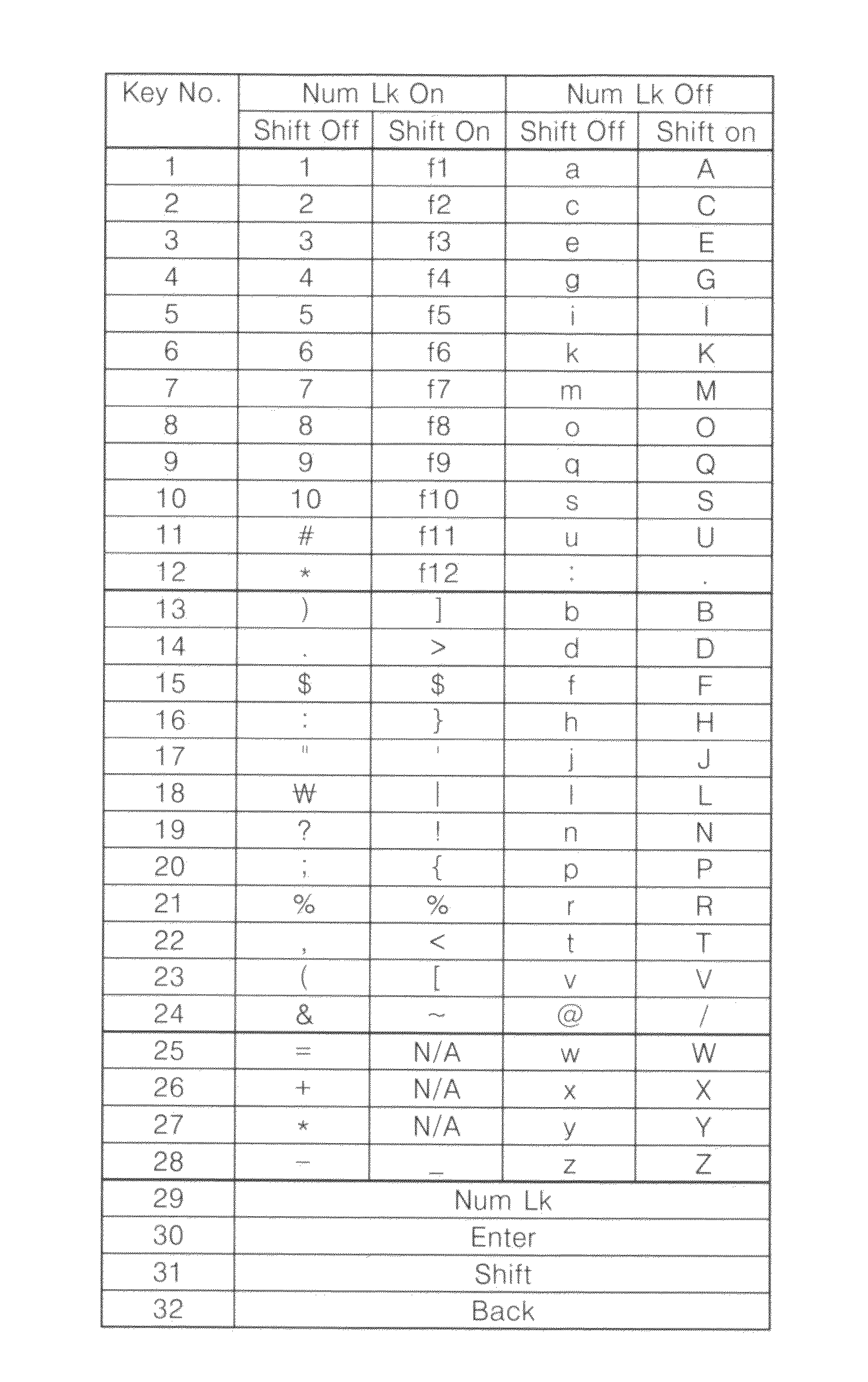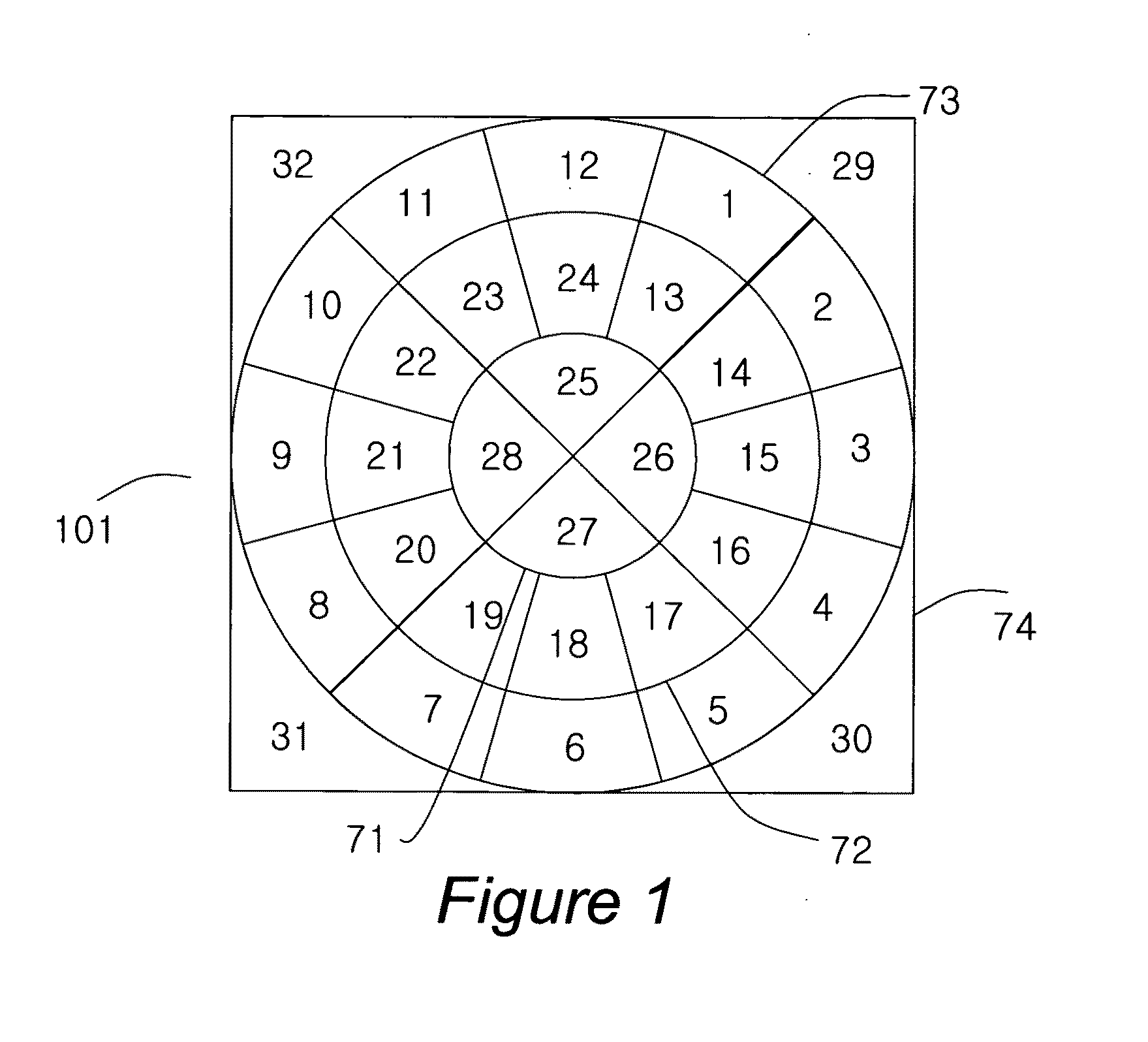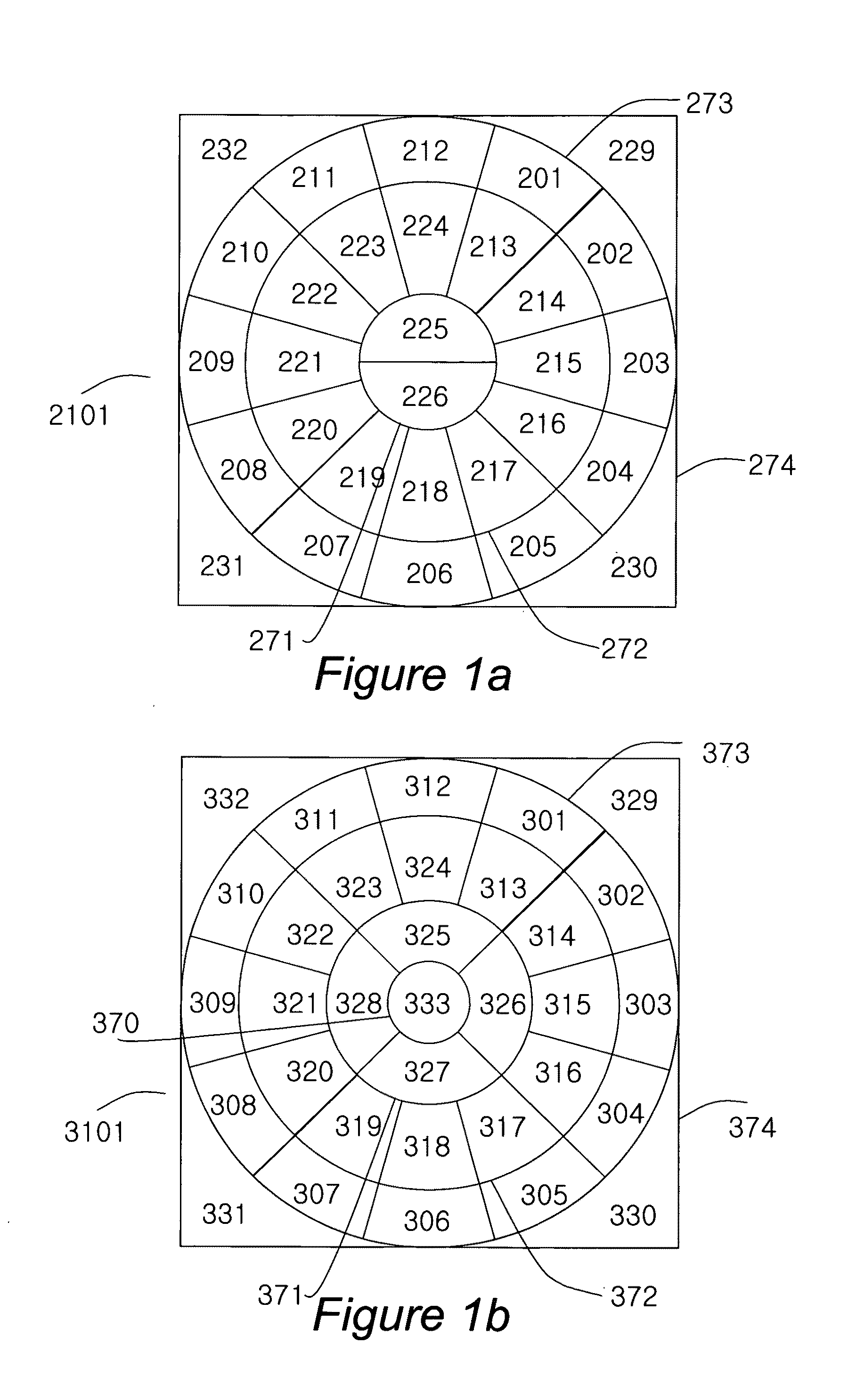Clock face keyboard
a clock face and keyboard technology, applied in the field of electronic instruments with data entry keyboards, can solve the problems of inconvenient placement of full alphanumeric keyboards, cumbersome frequent use, and inconvenient use of computer interface devices currently used in home or office, so as to minimize the number of strokes needed, minimize the number of strokes, and the effect of reducing the initial learning tim
- Summary
- Abstract
- Description
- Claims
- Application Information
AI Technical Summary
Benefits of technology
Problems solved by technology
Method used
Image
Examples
embodiment 101
[0057]In the embodiment 101 of FIG. 1, twelve keys numbered 1 to 12 are located on the inner circle within a virtual inner annulus bounded by the concentric virtual circles 71 and 72. Twelve keys numbered 13-24 are located on the outer circle within a virtual outer annulus bounded by the concentric virtual circles 72 and 73. Four keys numbered 25-28 are located in the geometric center bounded by the concentric virtual circle 71. Finally additional four keys numbered 29-32 are located at the four corners within a tangential square 74 surrounding the outer concentric virtual circle 73.
[0058]In the embodiment 101 of FIG. 1, the key areas 1-28 are sized to have substantially an equal key area even though their shapes may not be identical. It can be easily shown that the key areas 1-28 are of an equal key area if the ratio of the radii of the concentric virtual circles 71, 72, and 73 are 1:2:√7 or approx. 1:2:2.65.
[0059]The generic clock face keyboard comprises double (inner and outer) c...
embodiment 32
[0073]In the present embodiment, the 28 keys located on three concentric circles (e.g., the inner and outer concentric circles and the center circle) are used as alphanumeric keys and the four corner keys are used as selected control keys that are frequently used, including number lock key 29, enter key 30, shift key 31, and back space key 32. It is easily envisioned that these four corner keys 29-32 may be assigned additional alphanumeric functions instead, in which case, additional keys may be placed outside the tangential square to assign the same control functions. Although in the present embodiment 32 keys are shown and additional keys are not shown, such additions of additional keys outside the tangential square may be expected depending on the specific applications.
[0074]FIG. 3 lists the representative alphanumeric symbols that may be assigned to each of the 32 keys of the present keyboard arrangement (e.g., 12 keys on each of two concentric circles, four centrally located ke...
PUM
 Login to View More
Login to View More Abstract
Description
Claims
Application Information
 Login to View More
Login to View More - R&D
- Intellectual Property
- Life Sciences
- Materials
- Tech Scout
- Unparalleled Data Quality
- Higher Quality Content
- 60% Fewer Hallucinations
Browse by: Latest US Patents, China's latest patents, Technical Efficacy Thesaurus, Application Domain, Technology Topic, Popular Technical Reports.
© 2025 PatSnap. All rights reserved.Legal|Privacy policy|Modern Slavery Act Transparency Statement|Sitemap|About US| Contact US: help@patsnap.com



